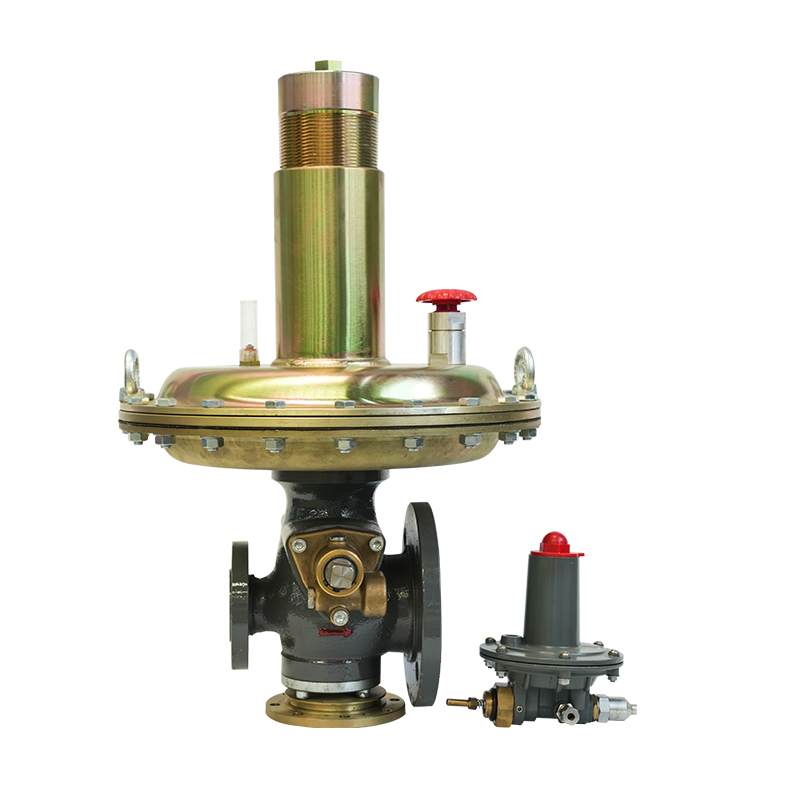LPG/natural gas/fuel gas filter with differential pressure gauge
The LPG/natural gas/fuel gas filter with differential pressure gauge is a device that filters gas and monitors its pressure changes. The filter can ef...
See DetailsIn modern industrial production and daily life, various gases such as natural gas, oxygen, and nitrogen are widely used. These gases are typically stored and transported under high pressure. If they were to enter terminal equipment or household pipes directly, they would pose significant safety risks and could even cause explosions. It is precisely because of this need that the pipeline gas pressure reducing valve and regulator were created. They serve as a bridge between high-pressure gas sources and low-pressure consuming equipment, acting as a core component to ensure system and personal safety. Their mission is to precisely and steadily reduce unstable high-pressure gas to the required safe working pressure, ensuring the smooth operation of every link in the chain.
To fully grasp their importance, one must first understand their intricate internal mechanisms. Although they come in many types, all pressure reducing valves and regulators operate on the basic principle of force balance. A typical pressure reducing valve consists of a body, a valve core, a valve seat, a diaphragm (or bellows), and a spring. When high-pressure gas enters the valve body from the inlet, it acts on one side of the diaphragm. The other side of the diaphragm is acted upon by the force from the adjusting spring. By tightening or loosening the spring, the force on the diaphragm can be changed, which in turn controls the opening between the valve core and the valve seat. When gas consumption increases, the outlet pressure drops, the diaphragm moves upward, and the valve core opening widens, thereby increasing the gas flow and causing the outlet pressure to rise again. The reverse happens when consumption decreases. This dynamic balancing mechanism ensures that the outlet pressure remains at a set, stable value despite fluctuations in inlet pressure and consumption, providing a reliable gas source for downstream equipment.
The design and selection of pipeline gas pressure reducing valves and regulators vary depending on the specific application environment. In high-pressure industrial sectors, such as chemical and metallurgical industries, the requirements for a high-pressure gas pipeline pressure reducing valve are extremely stringent. These valves must not only have a strong pressure-bearing capacity but also be able to withstand extreme temperatures and corrosive media. Their body materials, seals, and internal structures require special design to ensure precise pressure control and a long service life under high differential pressures. In household gas usage, the design of a domestic gas regulator focuses more on safety and convenience. Such regulators are typically installed after the gas meter, and their main function is to reduce medium-pressure gas to the low pressure required by household appliances. They often come with multiple safety features such as overpressure shut-off and under-pressure protection to prevent accidents. For fields with strict requirements for gas purity and pressure accuracy, such as medical and laboratory facilities, an industrial gas regulator valve must have high-precision regulation, be made from high-purity materials, and have excellent sealing performance to ensure the accuracy of experimental results and the normal operation of medical equipment.
Even a well-designed pipeline gas pressure reducing valve requires regular maintenance and correct operation to ensure its long-term stability and safety. First, routine inspection is essential. Users should regularly check the valve body for leaks, confirm that connections are tight, and verify that pressure gauge readings are normal. Any anomaly should be addressed immediately. Second, for regulators with an adjustment function, the pressure should be regulated strictly according to the manufacturer's instructions. Adjusting too quickly or too drastically can cause a sudden fluctuation in downstream pressure, potentially damaging equipment. Before performing any maintenance or adjustments, the upstream gas source must be shut off to ensure there is no pressure in the system. Furthermore, common faults of pipeline gas pressure reducing valves, such as unstable outlet pressure, valve leakage, or an inability to regulate, are often related to factors like worn internal diaphragms or valve cores, aging seals, or debris blockages. Timely cleaning and replacement of worn parts are crucial for extending their service life and ensuring safety.
With the advancement of IoT and industrial automation technologies, pipeline gas pressure reducing valves and regulators are also continuously evolving. Traditional mechanical regulators are being replaced by more intelligent electronic regulation systems. These systems integrate pressure sensors, microprocessors, and electric actuators, enabling remote pressure monitoring, precise control, and automated regulation. Through a mobile app or a central control system, users can view real-time pressure data and even modify set values remotely, greatly improving management efficiency and safety. At the same time, the application of new materials has led to significant improvements in the corrosion and wear resistance of pressure reducing valves, allowing them to adapt to more complex working conditions. In the future, pipeline gas pressure reducing valves will become more intelligent, integrated, and modular, not only capable of precise pressure control but also incorporating more safety protection and self-diagnosis features to provide a more reliable and efficient safeguard for industrial production and daily life.

Contact Us